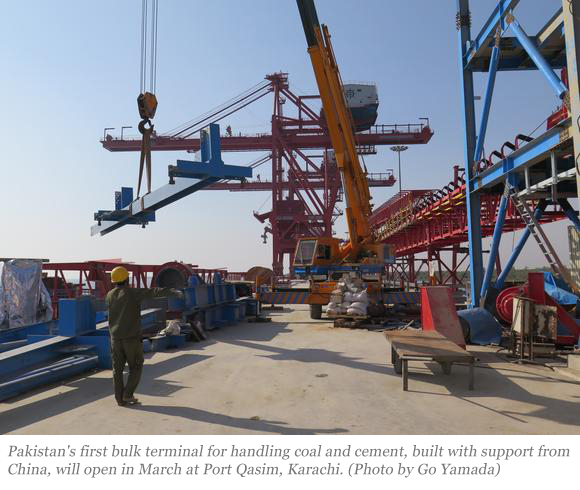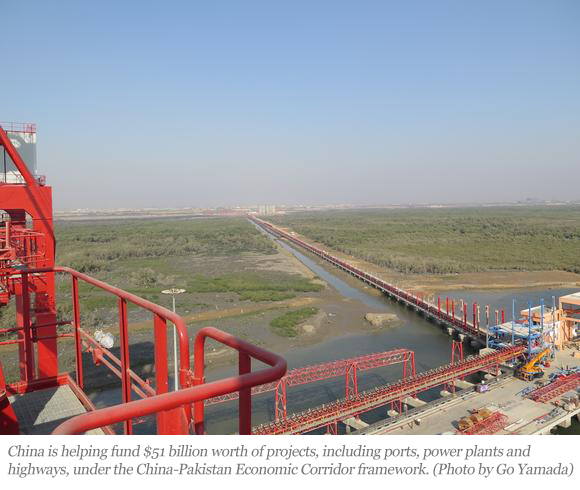KARACHI; Pakistan, the world’s sixth-most populous country, has embarked on a high-growth trajectory.
The nation of around200 million people posted gross domestic product growth of 4.7% in the fiscalyear that ended in June 2016, and the economy is predicted to expand by 5% ormore this fiscal year. The outlook for growth encouraged Morgan Stanley CapitalInternational to upgrade the Pakistan Stock Exchange last June from FrontierMarket to Emerging Market status.

Pakistan’s securitysituation, which was the biggest risk facing businesses operating in thecountry, has improved in recent years as its army has cracked down on militantsand organized crime. The Overseas Investors Chamber of Commerce &Industry, made up of some 195 foreign companies and other organizations thatoperate in Pakistan, conducted a security-related survey of its members lastJune that showed 90% of respondents perceived general threats to business tohave declined since August 2013, soon after the current prime minister, NawazSharif, came to power.

The successfulcompletion of the International Monetary Fund’s loan program has also allowedPakistan to restore the confidence of international investors, and the numberof foreign companies doing business in the country has increased steadily.
Still, the biggestdriving force spurring foreign investment in Pakistan is the China-PakistanEconomic Corridor, or CPEC, a China-led initiative to build roads, railroadsand energy infrastructure across Pakistan. More than 40 projects have beenidentified under the $51 billion CPEC framework, and some are already underway.They include building coal-fired power plants at Port Qasim in the suburbs ofKarachi and near the Thar coal mines in southeastern Pakistan, as well as extendingand upgrading railroads and highways.
More than $35 billionof the CPEC investment will be allocated to energy projects. Once completed bythe end of next year, power generation projects are likely to help Pakistanovercome its crippling power shortages, a major bottleneck for growth. This isa big reason the CPEC is welcomed by many in Pakistan’s industry, who say it isgoing to be a "game changer" for the country.
China also recognizesthat the CPEC initiative will help secure the quickest trade route connectingthe country’s western Xinjiang region and other landlocked areas to the ArabianSea, which could facilitate economic development in the Chinese hinterland. Theinfrastructure development initiative will also allow China to mitigate theproblem of overcapacity at home by exporting materials and equipment toPakistan.
There are proposalsto develop a power plant, an airport and highways and other facilitiesparticularly around the port of Gwadar on the southwestern coast of Pakistan,which is strategically important for China as it provides the country easyaccess to the sea.
China’s state-runindustrial companies, such as Sinohydro and China Machinery Engineering Corp.,have been assigned roles as investors in individual CPEC projects and asinfrastructure developers. The total cost of work being done under the CPEC isexpected to increase further as new projects, such as improvement of masstransit systems in major cities like Karachi and Peshawar, are proposed.
However, some in Pakistan are concerned about the massiveexpansion and penetration of Chinese enterprises into local industries.Recently, for instance, a Chinese-led consortium decided to take a 40%strategic stake in the Pakistan Stock Exchange, and Shanghai Electric Poweracquired a controlling stake in Pakistani utility K-Electric. A Chinese companyis said to have expressed interest in buying the defunct state-run PakistanSteel Mills. Such initiatives have also raised serious concern from India andother neighbors, which are worried that China may use Gwadar Port as a militarybase in the future.
| Source: Asian Review |
| Submitted By: Nikkei Asian Review |
| Date: February 16, 2017 |
